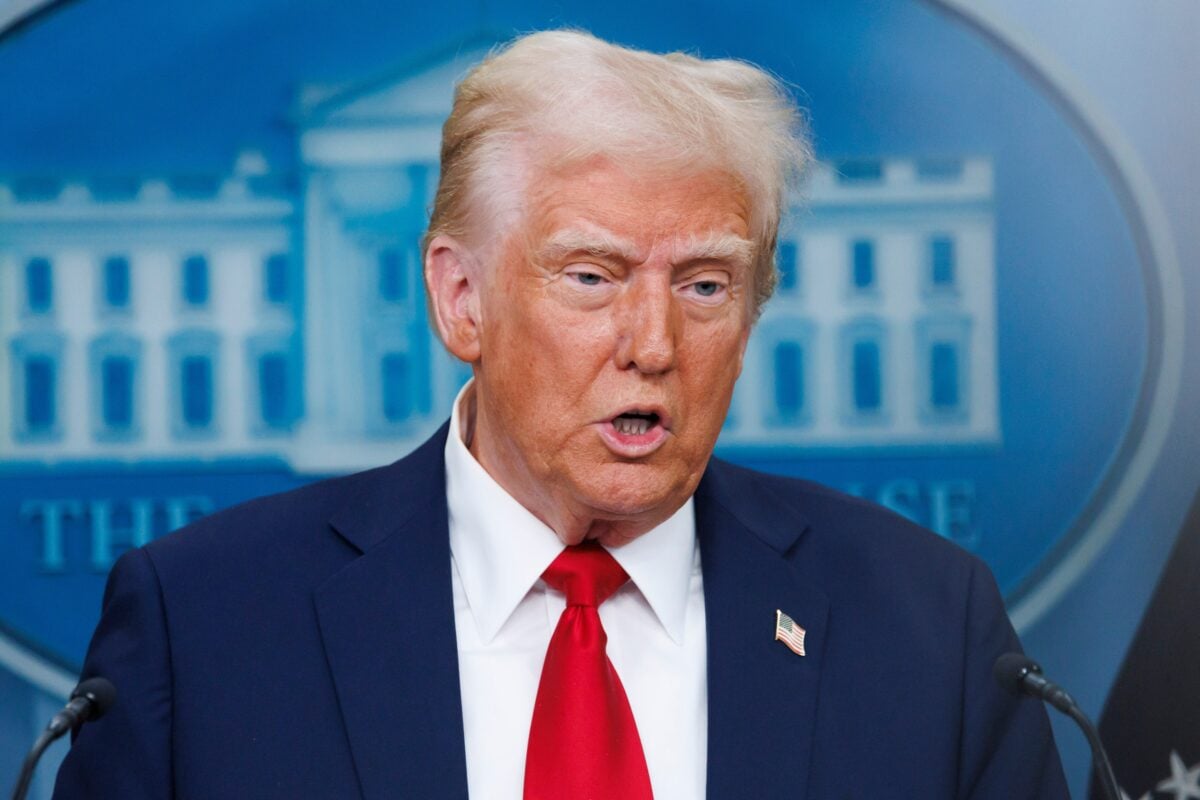TLDRs;
- Trump plans “substantial” tariffs on chip imports from companies without U.S. factories, exempting firms investing domestically.
- TSMC, Samsung, SK Hynix, and Apple likely safe due to multibillion-dollar U.S. investment commitments.
- Policy echoes failed 1980s semiconductor deal that raised costs but weakened U.S. competitiveness globally.
- Exemptions reward big players while smaller firms face higher barriers; legal challenges to tariffs remain likely.
President Donald Trump announced that his administration will move forward with tariffs on semiconductor imports from companies that do not manufacture in the United States.
While Trump did not disclose the exact rate or timeline of these “fairly substantial” tariffs, the policy is designed to push global chipmakers into building factories on American soil.
Trump framed the measure as part of a broader effort to strengthen domestic supply chains, reduce U.S. reliance on Asian production hubs, and reward companies already investing locally.
“If you want access to the U.S. market, you must help build America’s chip future,” he said.
Trumps comments on semiconductor Tariffs today at CEO meeting.
Honestly I can’t read how this will turn out, it seems he may be implying if companies “plan” to build in the U.S. they may get an exemption. Not very good if so… how do you read this response? pic.twitter.com/Uqjc5ui2cf
— A2THEZ (@awakenowzone) September 5, 2025
Exemptions for U.S. Manufacturing Investments
Notably, the tariffs will not apply to firms with active or planned U.S. facilities. This places companies like TSMC, Samsung Electronics, and SK Hynix in a stronger position, as each has announced multibillion-dollar U.S. projects.
Apple also recently boosted its domestic investment commitment to $600 billion over four years, with Trump praising CEO Tim Cook for being “in pretty good shape” under the new tariff rules.
By contrast, firms without U.S. plants could be hit hardest, facing the prospect of steep import costs. Smaller players and manufacturers without the financial resources to quickly establish U.S. production could struggle to remain competitive.
Historical Echoes of the 1980s Trade Battles
Critics argue that Trump’s strategy mirrors the 1986 U.S.-Japan Semiconductor Agreement, which restricted Japanese chip exports in a bid to boost American producers.
Instead of restoring U.S. dominance, the deal raised prices for U.S. computer manufacturers and weakened their global competitiveness.
At the time, America’s semiconductor market share fell from about 60% in the 1970s to 35% by 1989, despite protectionist measures. Today, U.S. share of global chip production has dwindled further, hovering around 12%. Experts caution that tariffs risk repeating this history by creating a government-enforced cost burden that fails to solve deeper structural challenges.
Winners, Losers, and Legal Challenges
The exemption system effectively creates winners and losers. Big tech firms with deep pockets to build U.S. fabs stand to benefit, while smaller rivals could face serious setbacks. The policy may accelerate the long-term shift toward domestic manufacturing, but only for companies capable of funding large-scale operations.
Trump has frequently leaned on tariffs as both a negotiation tool and a pressure tactic against foreign governments. However, many of his previous trade levies have been challenged in U.S. courts, raising questions about how long these semiconductor duties could remain in effect.
For now, the announcement has injected fresh uncertainty into the already volatile semiconductor supply chain, with investors, policymakers, and manufacturers watching closely to see whether this new tariff push strengthens or weakens America’s role in the global chip race.






